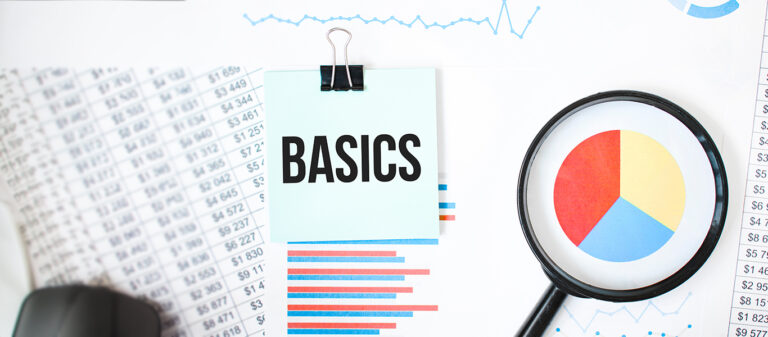How do I set up and manage a budget?
Please rotate your device for the best experience.
Transcript
Budget Basics
Interactive Video
[A man viewing his monthly expense report on his smartphone.]
[Multiple choice question with 2 answer options]
Option 1: pay car bill
Option 2: buy tickets
Narrator: Put yourself in this situation: Your car just broke down and the repair is going to be way more expensive than you thought it would be. The tickets for your favorite sports team or musical group go on sale and they will sell out today. You can only afford one - which do you pick?
[Two hands pictured with cash in each hand.]
Most people will say that’s a no-brainer…but why can’t you have both? The text “Why can’t you have both?” appears.] In an ideal world, you wouldn’t need to pick.
[A balance scale with needs (groceries) on one side and wants (sports equipment) on the other side.]
Spending money can be divided into paying for needs and paying for wants. [The square turns into a picture of groceries under “needs,” and the circle turns into sports equipment under “wants”.] The key is to have enough money to cover all your needs and still have money for wants. [The scale shifts so that the groceries are a little less heavy on the “needs” side.]
[A pie graph appears with half of it labeled “bills,” a quarter labeled “savings,” an eighth labeled “household expenses, and an eighth labeled “wants.”]
A budget can be the answer so you don’t have to make tough sacrifices.
[Picture of a house with a “For Sale” sign in front of it with the following text: “A budget can help you accomplish goals.”]
Using a budget can help you accomplish immediate and long-term goals.
[Picture of a pile of cash.]
In the short-term, a budget can ensure you are living within your means and can cover all your expenses monthly. [The amount of money decreases as an apartment, car, and clothing appear. The text, “live within your means,” appears.]
[Picture of a family sitting at the table and putting money into a piggy bank.]
Over time, sticking to a budget can help you build financial stability. [The text, “build financial stability, appears.] It helps you prioritize money to build savings [a picture of a safe appears], prepare for unexpected costs, and have money left to buy things you want.
[An older couple sitting on the couch looking at the paper the woman is holding. The man has a calculator in his hand.]
So, how do you get started with a budget?
[Picture of a check labeled “income” and three bills labeled “expenses” appear.
Start by writing down all your monthly income and expenses. Then you can see what a month of your money looks like. [A box flashes around the check and bills.] Once you get a snapshot of your monthly money flow, then you can start thinking about ways to make adjustments. [A downward facing arrow with a money sign appears.]
[A picture of a car in motion appears.]
For example, if you drive to work and pay to park [a parking sign appears in front of the stopped car], you can consider a ridesharing with a co-worker or taking public transportation a few days a week to reduce that expense. [The car and parking sign are replaced by a bus in motion.]
[A picture of a check with the text, “Use net income,” appear.]
Make sure you’re using net income numbers. [A circle appears around where the dollar amount would be on the check. The text, “Separate expenses,” appears with three images: an apartment, a lightbulb, and a medical bag.] Then it helps to separate expenses into fixed, variable, and periodic categories. [The apartment is labeled “fixed.” The lightbulb is labeled “variable.” The medical bag is labeled “periodic.”] Pick an average amount for varying expenses and build in some money for periodic bills.
[A picture of a paper and pencil appear.]
A budget doesn’t have to be fancy; you can use pencil and paper [the pencil starts moving around the paper], a worksheet [a worksheet appears], or an online tool.
[A man viewing his monthly expense report on his smartphone.]
A monthly budget is generally the most practical, because most bills are paid on a monthly cycle. [The text, “recommended to revisit budget monthly,” appears.] It’s recommended that you revisit your budget monthly and compare your starting point to how you wrap up the month.
[A scale labeled “spending vs. earning” appears with money being balanced on both sides.]
How did you do? Ask yourself what you could have improved upon and make any adjustments you see fit for the next month. [The scale adjusts from side to side.]
[A paycheck appears with an arrow pointing to a second paycheck.]
Remember, it’s all about leaving the paycheck to paycheck living behind you and moving towards financial freedom! [The paychecks are replaced by a paycheck pointing to a coin with wings that flies away.]
